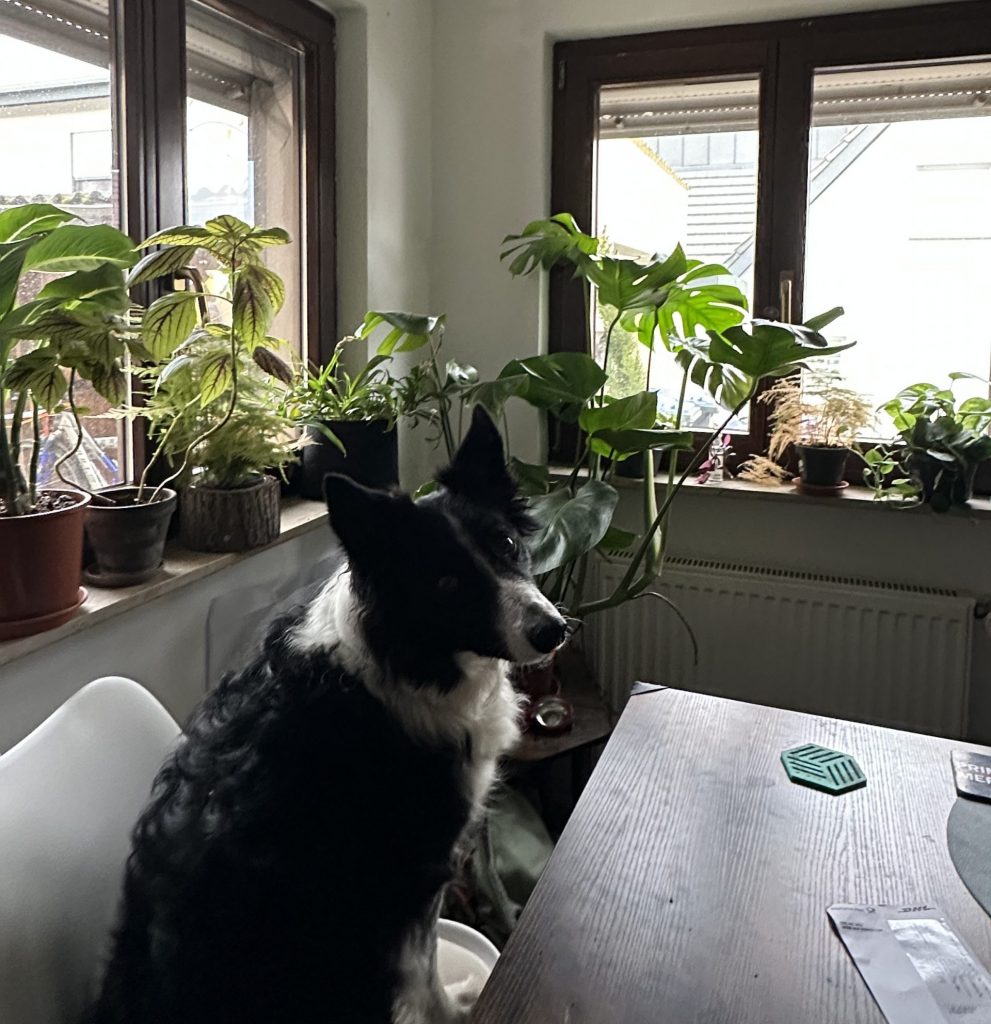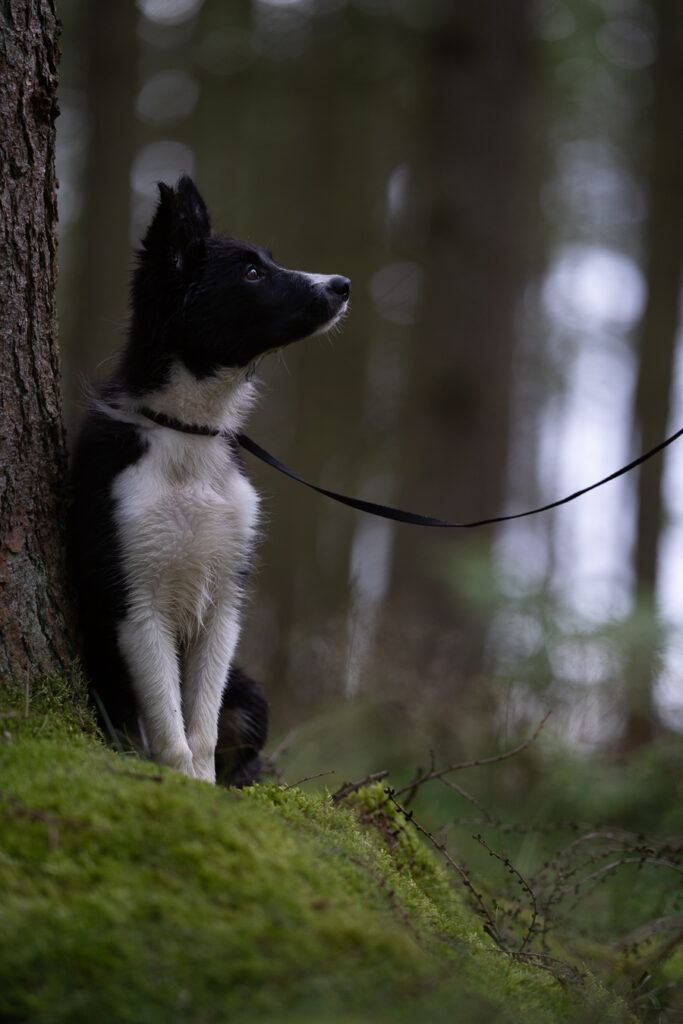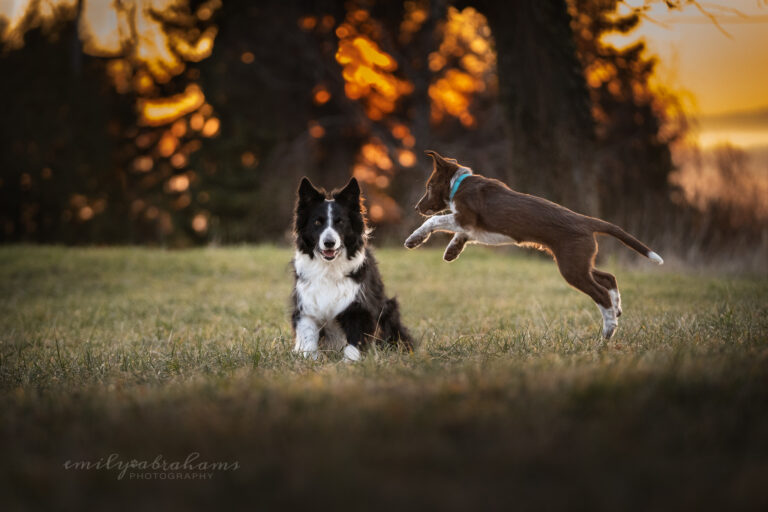While the saying goes that the “Eyes are the windows to the soul”, I would argue that the ears play just as large a role when it comes to pet photography.
After all, take a look at the two photos below. Which one feels like it has more connection?
I’m willing to bet the one on the left feels better. But he’s looking at the camera in both!
But in the photo on the right, his one ear is just slightly turned away. It’s like he’s a teenager sitting on the couch while scrolling on his phone. You’re having a conversation with him. He’s making the appropriate noises, he might even be looking at you and nodding… but he is definitely not fully engaged in that conversation!
Now, this does NOT mean I require my dog to be looking into the camera at all times…
But in general, wherever they’re looking or whatever they’re engaged in, they should be engaged in it. I prefer the ears to be alert but relaxed. Not crazed BC who’s just seen a ball, not bored and subtly listening for something more interesting… If he’s looking to the left, he’s looking there alertly.
What happens if the ears aren’t alert??
I mean, the whole world won’t fall apart… but your photo probably won’t FEEL as good, either. Have you ever had your photo taken when at a work or family function and you really weren’t in the mood? You smiled, sure, but you can TELL by looking at that photo that you didn’t want it to be taken.
This is probably how your dog’s going to look.
Some dogs will be very obvious when they’ve “disconnected” and aren’t involved in the photo any more, or they aren’t paying attention to whatever is around them. They’ve switched off. They’re over it. Ears are back or down.
If the ears of your dog are always looking like this when you’re taking photos, I encourage you to re-evaluate the amount of reinforcement the dog has regarding taking photos. Are you putting too much pressure on him? Does he not understand his job? Has he been posing too long or without reward? Or does he not have enough history of reward for the camera and therefore just hates it every time you get it out?
Depending on the situation you may need to go back several steps, to low-distraction environments, and just work on building up his reward history associated with the camera.
If he is uncertain about his job, try praising him while he’s posing. Journey’s best alert expressions often come from me enthusiastically crying: “YES! SUPER!!! WOOOOWWWWW AMAZING EARS BABY WOOWWWWW!”. There is absolutely no doubt in his mind that whatever he’s doing at that moment is amazing.
Here’s another example of good ears, vs. very disconnected ears.
If looking at the camera is too much pressure...
Let him look around and create his own photos. If he’s been posing too long, make the posing time much shorter and more rewarding!
Play sounds from your phone. This isn’t you asking your dog to do anything, it’s just sounds for him to react to. Journey LOVES voice notes from his favourite people, and YouTube videos of orchestras and interesting instruments 🤷🏻♀️
Here is a selection of another 4 ears from Journey (who is very sensitive to pressure), ranging from completely and utterly disconnected, to halfway there, to ALMOST but not quite… and finally, the photo I ended up using.
The reason I chose the one of him looking up?
First, I find these photos can often tell a more interesting story than another photo of my dog standing and looking at the camera – especially in a location like this which is quite open but there’s light toward the top, and second, he is totally engaged in whatever he’s looking at. He’s totally focused. I would much rather this, than a photo where he’s half-listening somewhere else.






















